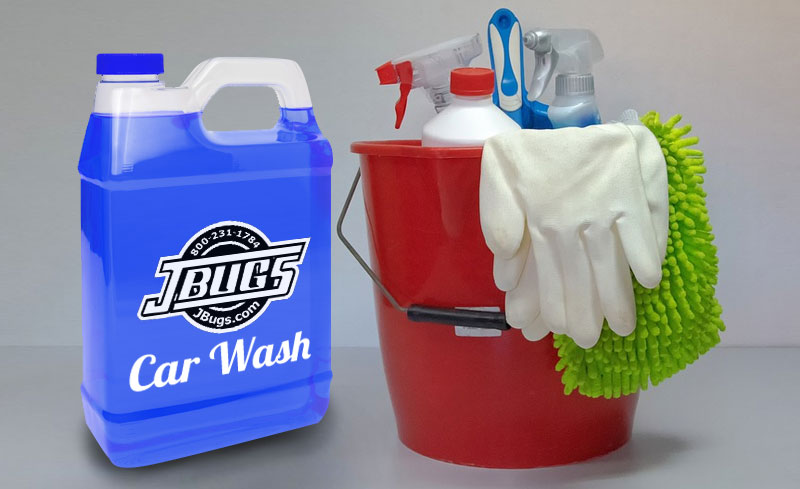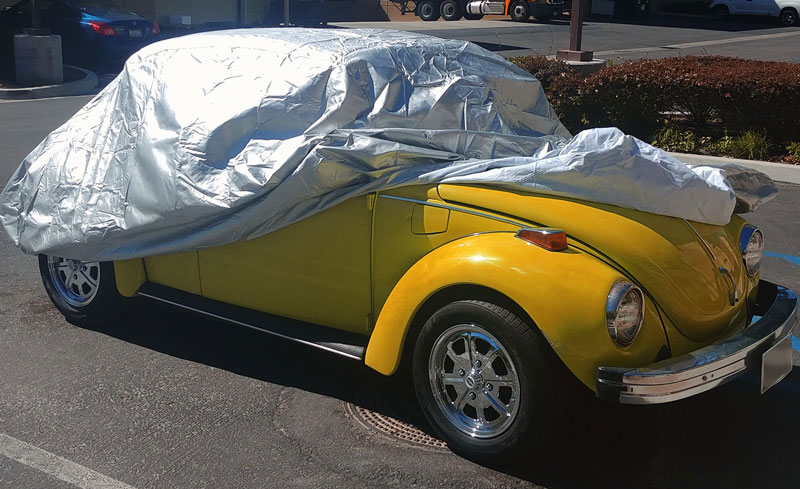
You spent countless hours wrenching on your VW. Your blood sweat and tears have gone into this project all summer long. Now that snow and rain are in season, do you really want to drive your baby in that sludge? Perhaps you are concerned about the effects rock-salt will have on your newly restored undercarriage. Or perhaps you prefer to drive a different car with better weather insulation and 4X4 snow-worthy capabilities in the winter. Whatever the reason, many people choose to store their VW's away for the winter. We can help you winterize it properly.
Start With a Clean Car:

Bird Droppings have mild acids that can fade your paint. Dust and debris left on the body can scratch your paint when putting on and removing a car cover. Brake dust left on wheels can have a corrosive effect. For these reasons wash, wax, and thoroughly dry your VW before you store it. Remember, waxing your car repels moisture and helps prevent rust and corrosion.
Invest in a Car Cover:
We recommend investing in a breathable car cover to help keep moisture out and prevent nicks, scratches, and grime build-up while in storage. The reason you want a breathable car cover as opposed to using a tarp or plastic drop cloth is moisture can condense under the plastic and the water stains will damage your paint. JBugs sells both indoor (light-duty) and outdoor (heavy-duty) breathable car covers that will help keep your VW protected wherever you choose to store it.

Gas & Oil Preparations:
For long term storage, we suggest a fresh oil change to keep harmful contaminants out of the engine and to help with engine startup in the spring. Fill the tank with gas and add a fuel stabilizer to prevent ethanol build up and interior corrosion. Pump gas has a shelf life, adding a fuel stabilizer can help preserve the gas over months. Topping off the tank prevents moisture from accumulating inside.

Choosing the Right Location:
Indoor Storage
If you have the room, your garage is the perfect place to store your VW for the winter. The enclosed location protects it from harsh elements, and keeps out most critters looking for a place to hibernate. The thick concrete floor in a garage helps to keeps away moisture that can creep into your car from underneath. Since your vehicle will be on a solid footing, it is also advisable to lift the car on jack stands whenever possible to avoid creating flat spots in the tires during storage. Also, be sure to roll down the windows an inch to prevent moisture building up in the cabin.
Outdoor Storage
If your garage doubles as your workshop, or if you live in an apartment, a garage may not be available for storage.
If you store your VW outside, a location with asphalt, paving stones, or pea-gravel would be idea. If your budget allows, some outdoor carports/canopies can be bought for as little as $200. These carports/canopies help keep rain and snow of your vehicle, but also provide shade in the harsh summer heat as well.

If you must park on the dirt we suggest parking on top of a plastic barrier (a cheap tarp works well) to help reduce mud splatter from rain. You can also use parallel wood planks under the tires to give your car a small lift and keep your tires out of mud and puddles. Not only does this keep your tires and looking great, but also helps extend their life span.
Ready for Storage:
Now that you are ready for storage, here are some additional steps.
- Don't use the parking brake during long term storage. There is a chance the brake pads and rotor can fuse after long-term contact. Instead, use tire-stoppers or jack stands (when possible).
- Close off any openings with plastic bags and duct tape. Tailpipes, air cleaner, and open heater vents can all be sealed off to keep bugs and rodents out.
- A box of baking soda in the trunk and interior will absorb some lower humidity and keep your car smelling fresh once it's time to go cruising.
- If your VW will be exposed to freezing temperatures you should drain the wiper washer reservoir before putting it into storage.
- VW's have been known to sit in barns for decades before being discovered and fired up without needing much more than fresh gas, an oil change, a new battery, and new spark plugs. For this reason we do not feel it is necessary to periodically fire up the engine while in winter storage.
- You can also unhook and remove the battery for storage (unhook negative cable first) to prevent corrosive acids leaking in the battery tray. This step is optional.
- Protect your chrome trim. Apply a heavy spray WD-40 on a cloth and wipe on your bumpers, hubcaps, tailpipes to help keep moisture away. Be sure to get the backsides of bumpers and hubcaps since they are notorious for rusting from the backside.



 5-Star Rating!
5-Star Rating!
